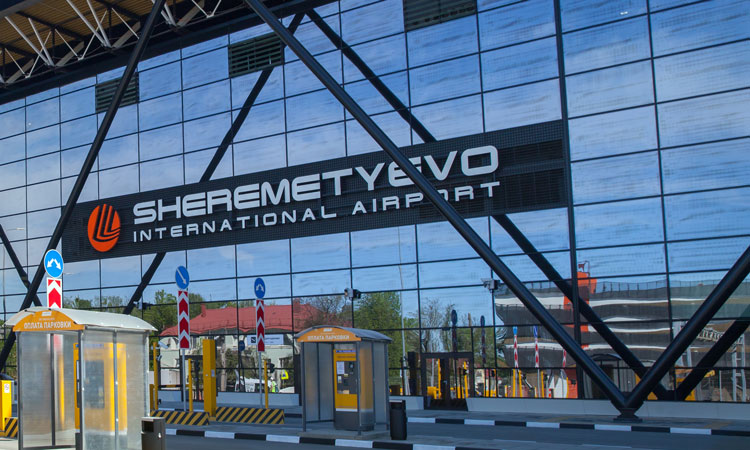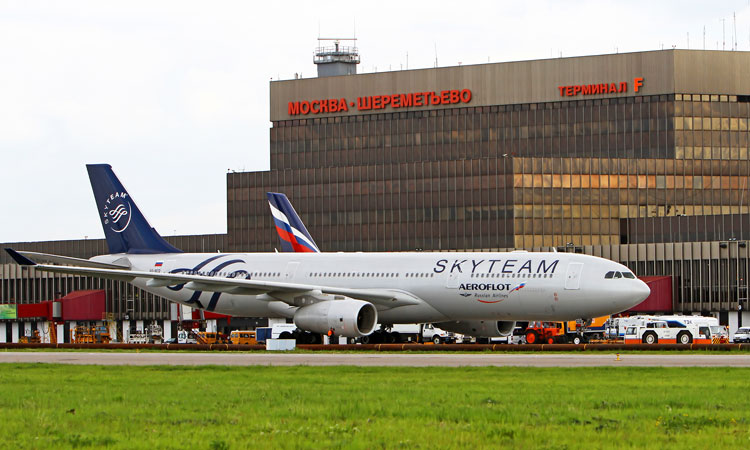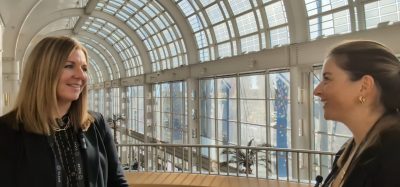How Sheremetyevo Airport handled the COVID-19 crisis
- Like
- Digg
- Del
- Tumblr
- VKontakte
- Buffer
- Love This
- Odnoklassniki
- Meneame
- Blogger
- Amazon
- Yahoo Mail
- Gmail
- AOL
- Newsvine
- HackerNews
- Evernote
- MySpace
- Mail.ru
- Viadeo
- Line
- Comments
- Yummly
- SMS
- Viber
- Telegram
- Subscribe
- Skype
- Facebook Messenger
- Kakao
- LiveJournal
- Yammer
- Edgar
- Fintel
- Mix
- Instapaper
- Copy Link
Posted: 25 May 2020 | Alexander Ponomarenko | No comments yet
Sheremetyevo International Airport’s Chairman, Alexander Ponomarenko, discusses how airports are often at the forefront of both medical and economic crises, and how Sheremetyevo acted to reduce the spread of COVID-19.


One aspect of the COVID-19 pandemic, which is extremely important in analysing the situation, is the circumstances in which airports find themselves. Today, airports are a link where medical and economic consequences of the pandemic converge and are most pronounced.
Airport managers around the world quickly responded to the situation they were facing and proposed appropriate solutions, and the leadership of Sheremetyevo realised from the very beginning the vital role the airport would play in preventing the spread of coronavirus infection in Russia and beyond. Guided by government directives, and in collaboration with responsible government agencies, the airport quickly arranged a triple system of monitoring and checking the passengers arriving on international flights.
Preventative measures against the spread of COVID-19
Screening passengers
Firstly, flights arriving from countries that were first to report numerous cases of COVID-19 (PRC, Republic of Korea, Iran and Italy) were redirected to Terminal F, where initial screening took place. By 19 March 2020, all passengers arriving from countries with a difficult epidemiological situation passed through the dedicated Terminal F, where they had to undergo a medical examination and screening.
If necessary, biomaterial samples were taken for subsequent analysis for COVID-19
The first preventive measures were taken on board of the aircraft before the passengers deplaned. Employees of Rospotrebnadzor (The Russian Federal Service on Surveillance of Consumer Rights Protection and Human Welfare) took the body temperature of passengers using portable thermal imaging devices. Then, all passengers and crew members under went another – more thorough – screening, using stationary thermal imaging devices at the exit of the passenger ramp in the arrivals area. Particular attention was paid to passengers whose body temperature was elevated during the screening on board. They were immediately isolated from other passengers.


Automated COVID-19 screening system in Sheremetyevo’s Terminal C
The third stage of the screening took place in the baggage claim area. Passengers who arrived from abroad were examined by employees of the Moscow Department of Health, the Ministry of Health for Moscow Region and Rospotrebnadzor, and if needed, personnel from the health centres of Sheremetyevo Airport were involved. Two emergency teams were always on duty at the airport.
As part of the screening, the body temperatures of all passengers and crew members arriving in Moscow were measured and, if necessary, biomaterial samples were taken for subsequent analysis for COVID-19. Medical personnel also carefully examined passengers for signs of illness. Anyone who had a fever or signs of a cold was taken to one of the isolation wards at airport health centres, and then to a hospital specialising in the treatment of infectious diseases.
Passenger surveys
As in most of the world’s international airports, all arriving passengers also had to fill out a questionnaire about their physical condition and recent trips. In addition, passengers serviced in other terminals always had the opportunity to contact the health centres of terminals D, E and B, where they were examined by highly-qualified medical personnel.
Information services
Sheremetyevo Airport also recognised the special importance of providing information about the disease and the preventive measures travellers should take, and provided full-scale, regularly updated information. Audio announcements about preventive measures were broadcast in the terminals and the recommendations of the Federal Service on Surveillance of Consumer Rights Protection and Human Welfare on countering coronavirus infection were placed at information desks, on monitors in terminals and on the airport’s official website.
Disinfection measures
All this was done in combination with active measures to detect and prevent the spread of coronavirus infection among staff, as well as measures to disinfect all areas.
The most stringent measures were applied at Terminal F, where all international flights permitted by the aviation authorities, including from countries with adverse epidemiological conditions, are currently arriving. A special coating of disinfectant is applied on jet bridges used by passengers to deplane.
Management decisions in regard to COVID-19
The aviation business was the first to be impacted by the coronavirus pandemic, and now the management of Sheremetyevo Airport needs to effectively respond to the very complex challenges of our time.
At a time when international air transportation was mostly suspended, and officials and citizens are looking forward to a decrease in the number of cases of infection and defeating the virus, we reviewed and adjusted current plans.
Development projects
To maintain the balanced operation of the airport, we made a number of management decisions. All investment projects were suspended, except for the urgent reconstruction of Runway-1. All non-production costs were significantly reduced, production resources were redistributed and processes were optimised. Three out of five passenger terminals were temporarily decommissioned, as well as Runway-3, until the passenger traffic and the frequency of take-off and landing operations are restored to levels that justify their use.
Airport workforce
We have also optimised staff schedules. Within the framework of current labour law, we moved part of the airport staff to a reduced working week, while others had to take time off. These measures applied to employees are also preventive and have been taken to protect their health and reduce the risk of illness. Top management of the company voluntarily gave up more than 60 per cent of their annual remuneration.


Isolated Terminal F serving flights from epidemiologically disadvantaged countries
Looking ahead to post COVID-19
The coronavirus pandemic hit us at a time when Sheremetyevo Airport was experiencing impressive growth. Our growth reflected not only the attractiveness of Sheremetyevo, the quality of services and types of services at the airport, but also the development of the Russian economy and the increase in the air mobility of the country’s population, which led to the intensive growth of our base carriers and increased interest of European and Asian airlines, especially Chinese.
Our forecast for this year includes the main scenario, according to which a gradual restoration of passenger traffic to the level of 2019 will take at least 12 months
Aeroflot’s passenger traffic over the past six years has grown from 21 million to 37.5 million passengers. The intensive growth in Aeroflot’s passenger traffic was also facilitated by the large-scale development of the infrastructure at Sheremetyevo Airport, including the opening of new terminals B and C. North Wind’s passenger traffic grew from 800,000 to 4.9 million passengers. In addition, since 2013, we have brought in more than 30 new airlines, which in 2019 accounted for about 19 per cent of the total passenger traffic.
Sheremetyevo served almost 50 million passengers in 2019, which was 8.9 per cent more than in 2018, and we predicted further growth in 2020. Passenger traffic on international routes grew by 7.8 per cent, to 26.68 million people, and on domestic flights by 10.3 per cent, to 23.15 million passengers. The number of take-off and landing operations in 2019 increased by 8.2 per cent compared to 2018, amounting to 386,370. This growth, as well as the income it generated, contributed to the expansion of the airport and the improvement of its infrastructure.
Human lives and health have consciously become the most expensive things in this world. This is the insurance that will help mankind cope with any misfortune.
Our forecast for this year includes the main scenario, according to which a gradual restoration of passenger traffic to the level of 2019 will take at least 12 months – that is, no earlier than until mid-2021. In the short term, and possibly medium term, we must plan our production and financial resources in such a way as to prevent or minimise layoffs, maintain the airport’s potential to resume regular operation and then restore the level of service as soon as possible.
I am sure that soon the world will cope with the coronavirus; humanity will overcome this crisis and learn very important lessons. Today, despite the existing contradictions, everyone has rallied around the need to respond effectively to a single disaster. People in all countries have realised the danger facing the world and are showing the greatest consciousness, saving thousands of lives by adhering to self isolation.
Professionals who need to be at their workplaces are also accomplishing an impressive feat and offering a vital service to their fellow human beings. We are grateful to our staff serving flights in Terminal F and to doctors who are meeting passengers around the clock. We also thank all medical workers of the world, who are now at the forefront of the COVID-19 struggle and risk their lives and health. Countries come to the aid of each other, sending their specialists to the most infected regions, supplying them with medicines and medical equipment, and sharing experience and wisdom in combating the epidemic. Human lives and health have consciously become the most expensive things in this world. This is the insurance that will help mankind cope with any misfortune.
Biography
Alexander Ponomarenko is Chairman of the Board of Directors of JSC Sheremetyevo International Airport, a position he has held since 2015. Previously, Ponomarenko has served as Chairman of the Board of Directors of AO ‘TPS Nedvizhimost’, Chairman of the Board of Directors of OAO ‘Novorosleseksport’, and Chairman of the Board of Directors of OAO ‘Novorossiysky Morskoy Torgovy Port’.
From 2004 – 2008, Ponomarenko was President of ‘Investitsionnaya Kompaniya TPS’ OJSC. Simultaneously, he was also Chairman of the Board of Directors of OAO ‘Novorossiysky Sudoremontny Zavod’ and Chairman of the Board of Directors of the Bank of Investments and Savings ‘INVESTSBERBANK’ (OAO).
Related topics
Airport crisis management, COVID-19, Safety, Security, Terminal operations

















